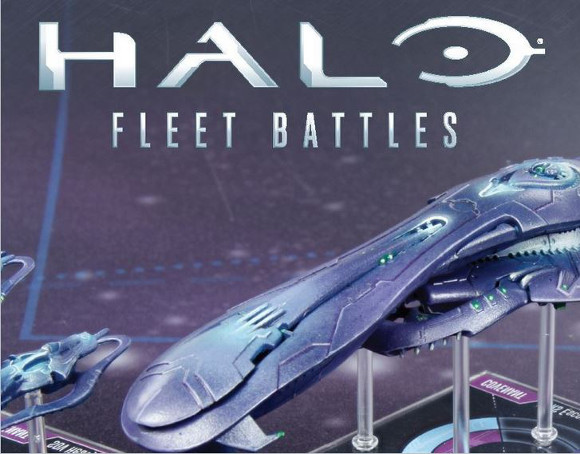HALO Fleet Battles: From Console to Tabletop


Spartan Games gives you the whole story of how HALO Fleet Battles came to be. Check it out.
In 2001, Microsoft changed the landscape of console based shooters with the release of Halo: Combat Evolved for the original Xbox, introducing the world to Master Chief Petty Officer John-117 (or the Master Chief for short) and a rich, sci-fi universe. Over the years the franchise spawned many more releases ranging from sequels to books and comics to updated re-releases on new consoles. And on October 27, 2015, Microsoft and 343 Industries (the developers and caretakers of Halo) will release Halo 5: Guardians on the Xbox One. But soon, another all-new gameplay experience will be available thanks to Spartan Games — an appropriately named UK based tabletop game studio. In February 2015, Spartan announced its forthcoming tabletop miniature game, Halo: Fleet Battles.
From Digital to Physical
In 2014, Neil Fawcett — Creative Director of Spartan Games — was discussing possible licensing options for a new game. Previously, the studio created their own worlds in the form of Firestorm Armada, Firestorm Planetfall, Uncharted Seas, Dystopian Wars, and Dystopian Legions. When asked what his dream project would be, he didn’t need time to think it over. Neil simply said, “The cream of the crop would be to get Halo.” If you’re going to dream, you might as well go big, and that’s what he did.
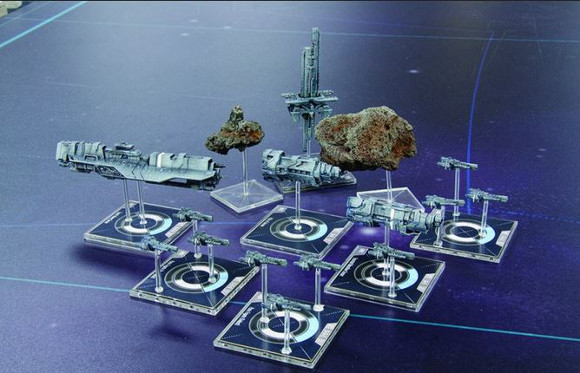
The pitch was made to Microsoft and 343 Industries, and it didn’t take long for them to get back to Neil with exactly what he wanted to hear. They were interested. With that, Neil broke the news to an excited group of designers and sculptors: Spartan is bringing one of the biggest video game franchises from the digital space to the physical space like never before — the game will focus on the gigantic ships and battles that ensue between the humans of the United Nations Space Command (UNSC) and the alien Covenant forces.
Armed with a slew of Xbox 360s and Xbox Ones, the Spartan team got together in a secluded cottage and set about playing every Halo game. They were fans of the series and had played them before, but the team wanted to make sure that, even in a large-scale fleet game, what made the Halo series popular remained in Spartan’s game: a deep mythology brought to gamers through powerful storytelling and rich characters.
The team had to channel this into a tabletop system that would appeal to fans of the games who might be new to tabletop miniature gaming, and to veteran wargamers who may have no real attachment to the Halo name but are looking for a new miniatures game to try. Luckily, this was made easier through 343 Industries’ constant support, working side-by-side with Spartan to provide lore, encouragement, and quality art.
Explore the Unexplored
Spartan’s decision to focus on the ships of Halo is not without reason. Beyond cutscenes or minor gameplay sections, space combat is rarely focused on in the Halo video games. “Everyone knows the Master Chief, but there’s an entire military behind him. We wanted to put a little more flesh on the bone. And spaceships are cool,” said Neil. People who play the games know these ships from cutscenes, but now they can actually maneuver them and see how battles are fought in the Halo Universe.
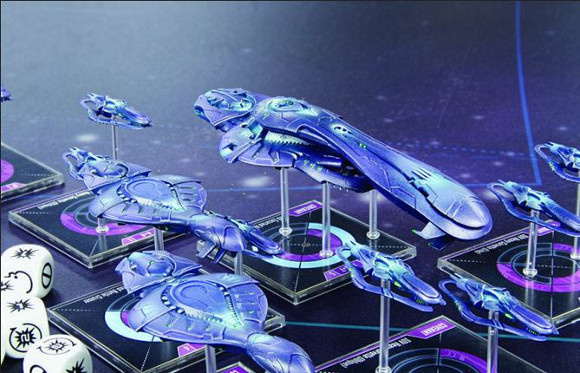
The very reason Spartan chose to develop a fleet game is also one of the biggest challenges. Neil and his team have been entrusted with bringing to life something Microsoft and 343 Industries have yet to do, at least publicly. According to Neil, 343 Industries has been nothing short of supportive and excited with the whole process. “Microsoft and 343 Industries have opened their doors to a wonderfully rich tapestry of information.” A lot of this information has never reached the public, but it is there and accessible for Spartan’s team to use.
Microsoft and 343 Industries have entrusted Spartan not only with the duty of turning a mountain of art and unpublished background information into a compelling fleet battle system, but also of realizing ships such as the Covenant ORS-class Heavy Cruiser and UNSC Epoch-class Heavy Carrier that have, until now, only existed in the Halo Story Bible, dialogue exchanges, and concept paintings. Designed by Spartan’s talented model makers, the ships are then carefully reviewed by 343 Industries for accuracy and conformity with established canon before seeing physical form in Halo: Fleet Battles.
Assemble for War
Players construct Fleets by assembling “Elements,” which is the game’s terminology for Flight Stands of UNSC and Covenant ships. Each Element has a point value depending on what models are placed on the Flight Stands. Those ship models are highly-detailed, colored plastic — grey for the UNSC and purple for the Covenant. When the game launches, the staples of the UNSC Fleet will include the new Epoch-class Heavy Carrier, as well as Marathon-class Heavy Cruisers and the Paris-class Heavy Frigates. The Covenant will have the new ORS-class Heavy Cruisers, Battlecruisers, and Heavy Corvettes. Elements are then formed into Battle Groups and, in turn, these form a Fleet.
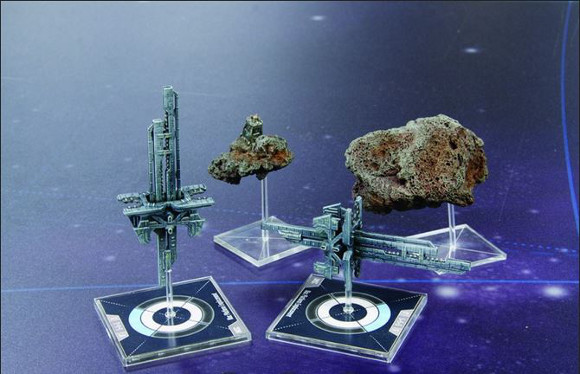
The massive ships in the game, such as Covenant Assault Carriers and the UNSC Infinity, are divided into multiple sections: aft, mid, and fore. Each section has its own arc of fire, weapons, shields, and more. The smaller ships come several to a Flight Stand, with the UNSC’s Heavy Frigates mounted three to a Stand, while the Covenant’s Heavy Corvettes come in pairs. Putting multiple ships on a base isn’t a new idea, but the formation strategy Spartan is implementing in Halo: Fleet Battles makes it unique and integral to strategic game play.
Each multi-ship Flight Stand allows players to customize their ship formations, such as when small ships are escorting larger vessels, which has real effects on the way Battle Groups function. These formations are not static; they can be changed during the game. Spartan decided to do this to avoid those cases were, for example, a player has three Battle Groups that have lost all but one ship on each base. Now, instead of running those lone ships around the map, avoiding being shot, a player can form a new, unified Battle Group. This feature also keeps opponents on their toes as players can change up their strategies mid-game.
Beyond the ship miniatures, various fighters and bombers from each side are represented by stacks of Wing Tokens on the playfield. These small one or two-manned craft act as the initial volley of attacks in most battles. They are built to die, so don’t get too attached to the Wings. The Wings go a long way towards recreating the hectic feel of battle as small craft buzz around the middle of the conflict as the giant ships volley weapons fire back and forth.
Not Just Empty Ships
Spartan knows fans love the cast of the Halo series. And they plan to keep respecting that love. Ships can’t fly themselves, so each player must choose a Fleet Commander, such as Vice Admiral Michael Stanforth for the UNSC or Supreme Commander Rho ‘Barutamee for the Covenant, while building their forces. Heroic Characters will also be available for players to add to their fleet, such as Cortana or Prophets, to aid their Commanders in battle.
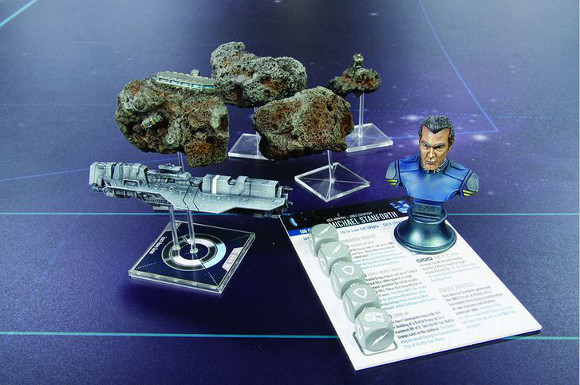
Fleet Commanders are part of what Spartan is calling the Command and Control engine – a system designed to be easily picked up by the non-tabletop gamer and deep enough to keep a wargamer engaged and coming back once the shininess of a new product wears off. Commanders are represented by Data Sheets and highly detailed resin busts, but are not actually assigned to a particular ship. The Data Sheets have precut slots for custom Order Dice, with some of these slots having a color. At the start of a turn, players roll their dice and place them in the Sheet. The three icons on the dice allow players to issue orders like: Attack, Defend, and Command. When an Order is issued, that die is removed from the sheet and considered used. Once used, the die can’t be used again until the next turn, when all burned Order Dice are rolled again.
Attack and Defend are the dice players will burn when initiating an Attack or Defense Order. Bigger attacks may require you to burn more Attack icons (the same goes for Defense), so you might find yourself banking specific icons in the Data Sheet to be used later. A Commander must always be able to judge when to hold fire in hopes of gaining a better opportunity down the line.
Command icons serve a few different roles. Just having Command icons in waiting can net a Fleet a bonus to initiative in a round, but they can also be spent to issue Command Orders. Orders come in two forms: Standing Orders and Specialist Orders. A Standing Order is a non-unique action any Commander can use, such as “Brace For Impact,” “Improved Shooting,” and “Form Up,” to name just a few.
Specialist Orders are skills a particular Commander is known for. Some of these orders come with pros and cons that help build the personality of the Commander on the battlefield. For example, a Covenant Commander might be known for his aggressive boarding party tactics, so his special ability is to launch boarding parties from an extended range. Whether a Standing or Specialist Order is given, each one has a Command icon cost attached to it, so you’ll need to balance your Data Sheet with what you think will be the right amount of Attack, Defend, and Command icons.
Battles are not fought by one person alone, which is where the Heroic Characters come in, such as Cortana, Spartans, Prophets, and others. You can station these characters on ships throughout your fleet, which means they are vulnerable to death. Heroic Characters can potentially give Commanders an edge in the fight. The Heroic Characters sheets also has slots that are color coded, and if those slots match a Commander’s, the Commander can share those dice in the slots.
Neil describes this system as a matrix of effects. Some characters may get along with certain Commanders better than others, so friendships and rivalries can affect gameplay, which is another step towards giving characterization to the game. As an added bonus, the Fleet Commanders and Heroic Characters art is all being handled by the talented artists at 343 Industries.
The Spartan Touch
You can’t talk about dice and Spartan Games without discussing exploding dice, a hallmark of the company’s games. “It’s our thing. It’s what we do,” Neil remarked. For those unfamiliar with the idea of exploding dice, when a die is rolled, and the highest/best outcome comes up, you keep rerolling that die. This can result in continued successes that far outweigh what you should have been able to roll with just the given dice.
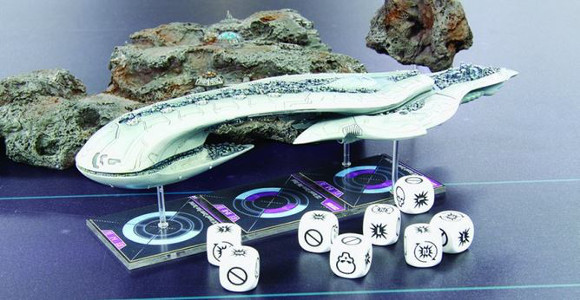
However, in Halo: Fleet Battles, a capping mechanic has been added to stop the rolls from getting out of control. This new mechanic comes in to play when determining effective ranges between ships. For example, a ship in effective range will get to go full out with all their fire power, but being further away may strip away the ability to have your dice explode into more successes. Doing this helps encourage players to maneuver ships more often. If you really need to take down that Covenant or UNSC ship, you’re going to have to risk getting up close and personal.
Keeping Story in Mind
Over the years, the Halo games, novels, comics, and live-action and animated videos have created a rich, story-driven world. At its core, you have the UNSC going up against the Covenant. Along the way, you meet the heroes of these battles and the story becomes more personal. Spartan knew maintaining this story driven world was important when developing Halo: Fleet Battles.
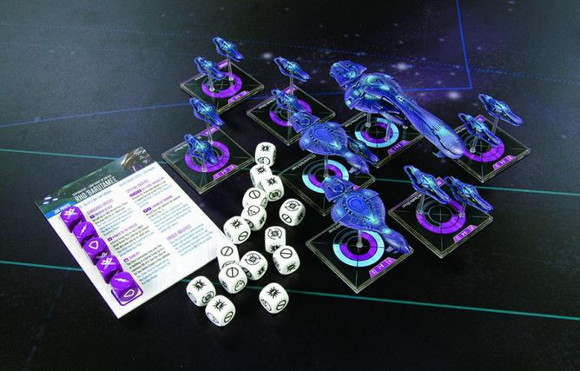
To do this, the team went beyond making detailed miniatures of ships. It looked to give a driving force to the conflict. The starter box, called Halo: Fleet Battles, The Fall of Reach, sets the stage of battle at the fortified world of Reach, a world colonized by humans. After the Covenant learned about the existence of Reach and a powerful artifact housed there, the choice was made to go after it. Thus the battle ensued, and that’s where the campaign structured gameplay of Halo: Fleet Battles’ starter comes in.
With the help and encouragement of 343 Industries, Spartan developed a Campaign Guide for the starter that offers a slew of introductory scenarios designed to walk players through the mechanics of the game. Scenarios give diehard Halo players a story to follow that they’re familiar with and a story structure similar to the console games. For example, a scenario may require the UNSC side to take down a Covenant ships’ shields, board the craft, capture the Prophet on board, and escape with the target. Or the player may run a scenario built for them to lose, but they must complete several side missions to meet their actual win condition before being destroyed by the Covenant. “There are times when it is about how well the UNSC lose. How bravely they lose,” remarks Neil.
However, scenario play isn’t required. Traditional tabletop gamers can play their way by bringing forces to the table to demonstrate their prowess without needing a story reason. But it’s Spartan’s hope that these scenarios will bring even those not interested in the story a little closer to the universe of Halo. And don’t worry, Reach is just the beginning. More scenarios and campaigns are set for release in the future.
Choosing Sides in the Coming Battle
When it comes time, will you attempt to take Reach as the Covenant or defend it with your life as the UNSC? Beyond the story hooks, there are differences between how the two perform on the field of battle. Take a look at Spartan’s design philosophy behind the gameplay of the warring factions. While developing the game, Spartan proposed the idea of a pack of hounds taking down a bear, and 343 Industries agreed. “The Covenant is the bear, and the UNSC is the pack of hounds. If the big bear hits the hound, it is dead meat. The hound pack has to hunt them knowing they’ll take pain and casualties, but also knowing they’ll open up the weak spot to go for the jugular,” explained Neil.
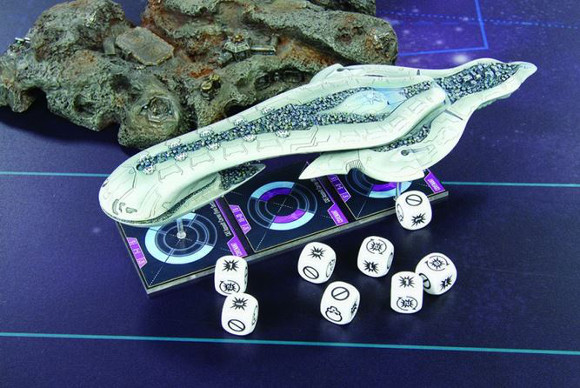
The philosophy comes out in gameplay form when you look at the number of ships on the field between the two forces and their designs. UNSC is loaded down with titanium armor, which is not as defensive as the Covenant’s energy shields. However, when you have enough UNSC ships knocking at a Covenant shield, they’ll eventually get through. And that’s when the UNSC’s missiles start to do their job. But that doesn’t mean the Covenant sits idly by. While the UNSC slowly chips away at the shields, the Covenant will strike back with highly destructive force.
Get Ready
Spartan Games aims to launch Halo: Fleet Battles in the Summer of 2015 with continued support after that. The two-player starter comes with 49 ships and will have everything players need to start playing the game, such as a detailed rule book, a Campaign Guide, tokens, dice, and more.
Once people have the game, Spartan and 343 Industries plan to offer continued support through structured tournaments, online scenarios, and additional campaign guides. Specially designed terrain is also in the works ranging from some for the cost conscious gamers to those looking for something a little more luxurious. In the next few months, come back for a review and more news about Halo: Fleet Battles and future Halo games from Spartan Games, 343 Industries, and Microsoft.
I can hardly wait!

